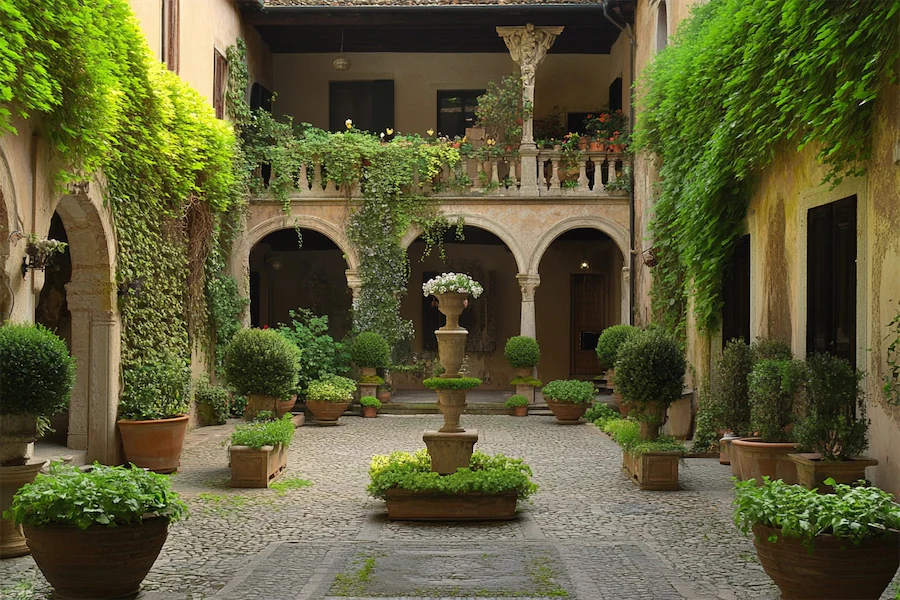A courtyard garden is an enclosed outdoor space, typically surrounded by walls or buildings, designed to provide a private and tranquil retreat. These gardens can transform compact areas into lush, functional extensions of living spaces, offering a seamless blend of indoor and outdoor environments.
History and Origins of Courtyard Gardens
Courtyard gardens have been integral to architectural designs across various cultures for centuries. In ancient Rome, the peristyle was a central open courtyard surrounded by columns, often adorned with gardens and fountains, serving as a focal point for family life and social gatherings. Similarly, traditional Islamic architecture features riads, which are interior gardens providing serene sanctuaries within homes. These historical precedents highlight the enduring appeal of integrating nature into living spaces.
Key Features of Courtyard Gardens
Courtyard gardens are characterized by several distinctive features:
- Enclosure: Surrounded by walls or buildings, these gardens offer privacy and a sense of seclusion, making them ideal for relaxation and contemplation.
- Compact Design: Often situated in limited spaces, courtyard gardens maximize every inch by incorporating vertical planting, layered vegetation, and multifunctional elements.
- Indoor-Outdoor Connection: Large windows, glass doors, or open archways facilitate a seamless transition between the interior and the garden, enhancing natural light and ventilation within the home.
- Central Focal Points: Features like water fountains, sculptures, or statement plants serve as visual anchors, adding interest and character to the space.
Applications of Courtyard Gardens
Courtyard gardens can be adapted to various settings:
- Urban Residences: In densely populated areas, courtyard gardens provide a private oasis, mitigating the effects of urban noise and pollution.
- Commercial Spaces: Restaurants, hotels, and office buildings incorporate courtyard gardens to enhance aesthetics, offer pleasant views, and create inviting environments for patrons and employees.
- Cultural Institutions: Museums and galleries use courtyard gardens as contemplative spaces, enriching visitors’ experiences and showcasing art in natural settings.
Considerations When Designing a Courtyard Garden
When planning a courtyard garden, consider the following:
- Light and Shade: Assess the amount of sunlight the area receives to select appropriate plants. Incorporating shade-tolerant species or installing pergolas can help manage light levels.
- Ventilation: Ensure adequate airflow to prevent the space from becoming too humid or stagnant, which can affect plant health and comfort.
- Drainage: Proper drainage systems are essential to avoid waterlogging, especially in enclosed areas where natural runoff may be limited.
- Material Selection: Choose durable, weather-resistant materials for flooring and furnishings to withstand the elements and reduce maintenance.
Conclusion
Courtyard gardens offer a harmonious blend of architecture and nature, creating intimate spaces that enhance the quality of life. By thoughtfully designing these gardens to suit specific needs and environmental conditions, one can cultivate a personal sanctuary that provides beauty, tranquility, and a connection to the outdoors.
